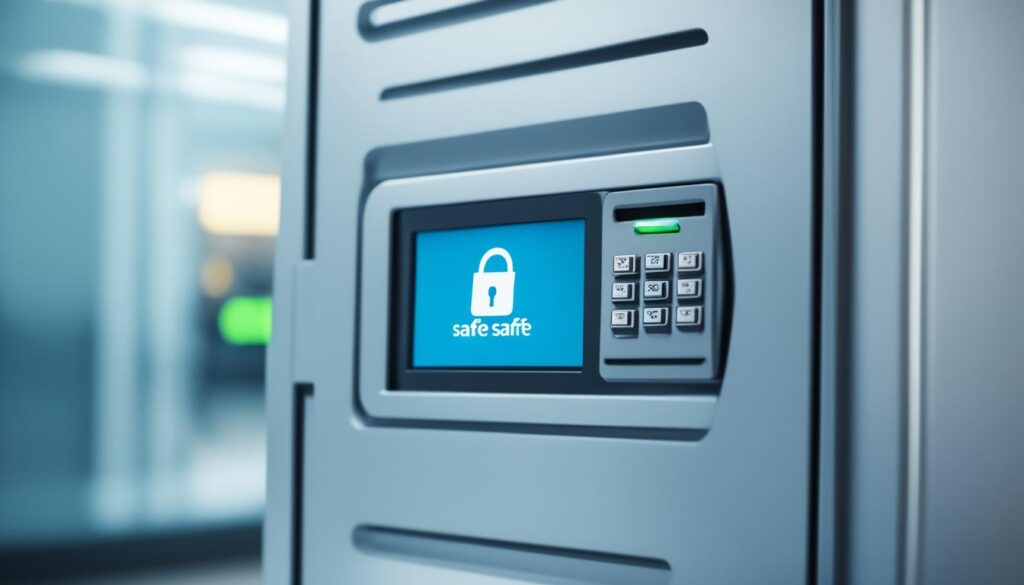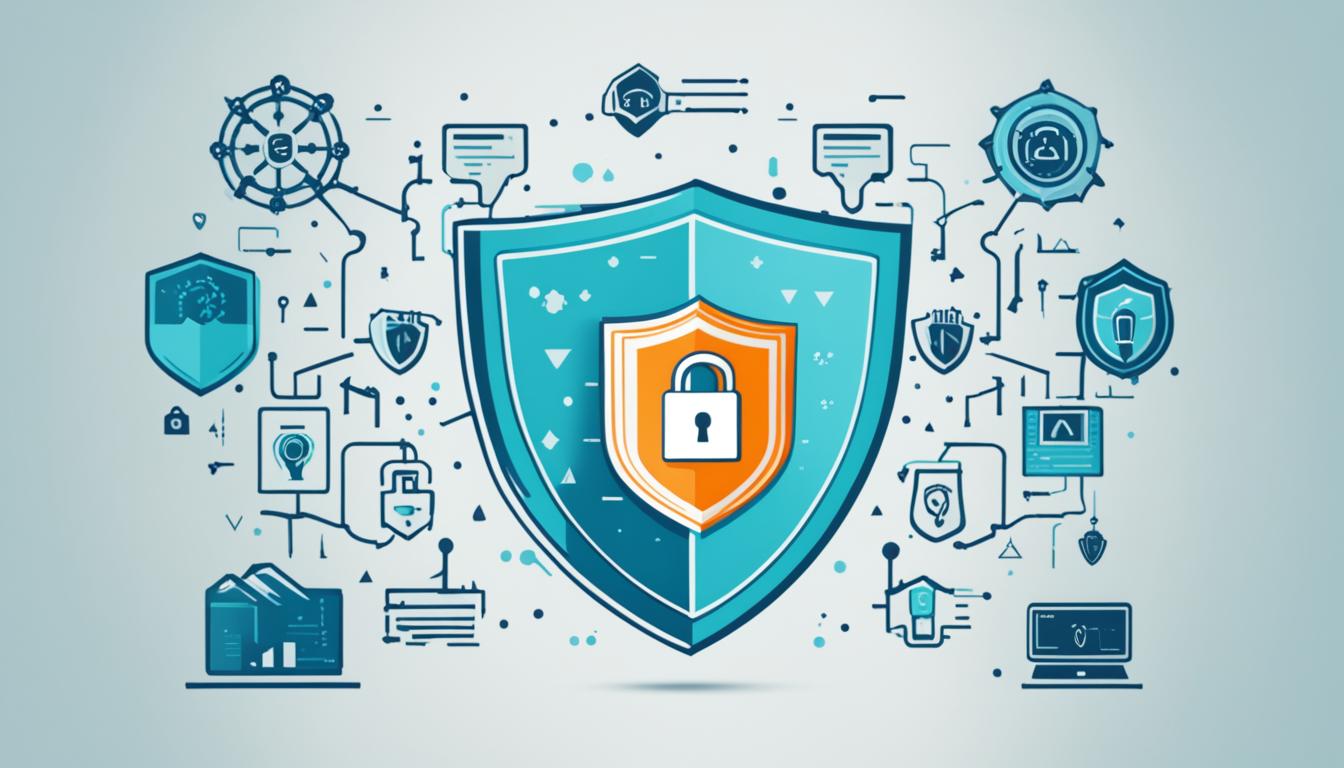Non-profit organizations play a crucial role in addressing societal challenges and championing causes. In today’s digital age, protecting non-profit organizations online is more important than ever. With the increasing reliance on technology and the sensitive data they handle, non-profit groups are increasingly at risk of cyber threats. That’s why cybersecurity for non-profit organizations is essential to safeguard their own data, the data of their donors and beneficiaries, and their reputation.
To prevent cyber threats in non-profits, it is vital for organizations to implement cybersecurity best practices tailored to their specific needs and requirements. This includes implementing measures to protect non-profit data security and prevent unauthorized access.
By staying ahead of cyber threats and addressing cybersecurity risks, non-profit organizations can ensure the continuity of their operations and effectively fulfill their missions. Whether it’s preventing data breaches or safeguarding against ransomware attacks, non-profit groups must prioritize cybersecurity to maintain the trust of their donors, volunteers, and beneficiaries.
Key Takeaways
- Cybersecurity is crucial for non-profit organizations to protect their data, donor information, and reputation.
- Implementing cybersecurity best practices is essential to prevent cyber threats in non-profits.
- Non-profit organizations should prioritize non-profit data security to safeguard their operations and fulfill their missions.
- By staying vigilant against evolving cyber threats, non-profit groups can effectively protect their digital assets.
- Protecting non-profits online is essential to maintain the trust of donors, volunteers, and beneficiaries.
Why Cybersecurity is Crucial for Nonprofits
Non-profit organizations play a vital role in addressing societal challenges and championing causes. These organizations handle a significant amount of sensitive data, including donor information, volunteer records, and beneficiary personal data. Given the importance of this information, prioritizing cybersecurity is crucial for non-profits to protect their operations, reputation, and the trust of their stakeholders.
Cybersecurity is essential for non-profit groups to:
- Protect sensitive data: Non-profits deal with sensitive information on a daily basis, such as social security numbers, financial records, and personal addresses. By implementing robust cybersecurity measures, they can safeguard this data from unauthorized access or identity theft.
- Maintain financial integrity: Non-profits rely on the trust and support of donors to fund their mission. A breach in cybersecurity can compromise financial transactions, leading to reputational damage and financial loss. Protecting financial integrity through effective cybersecurity measures is crucial for the sustainability of non-profit organizations.
- Ensure operational continuity: Non-profits often rely on digital platforms and technology to carry out their activities. A cyberattack can disrupt operations, leading to service interruptions and potential harm to beneficiaries. By prioritizing cybersecurity, non-profits can ensure the continuity of their operations and fulfill their organizational goals.
- Preserve reputation and trust: Non-profits’ reputation and trust are essential for attracting donors, volunteers, and beneficiaries. A data breach or a cybersecurity incident can severely damage an organization’s reputation, leading to a loss of support and credibility. By investing in cybersecurity, non-profits can effectively protect their reputation and maintain the trust of their stakeholders.
- Fulfill compliance requirements: Non-profit organizations operate within a regulatory framework that governs the protection of sensitive data and privacy rights. Compliance with data protection regulations is not only a legal requirement but also crucial for maintaining the trust of stakeholders. By prioritizing cybersecurity, non-profits can ensure compliance with applicable regulations and avoid legal penalties.
It is clear that cybersecurity is an essential aspect of non-profit organizations’ operations. By implementing robust cybersecurity measures, non-profits can protect sensitive data, maintain financial integrity, ensure operational continuity, preserve reputation and trust, and comply with data protection regulations. In the next section, we will explore the common cybersecurity risks faced by non-profits and how they can proactively mitigate these threats.
Common Cybersecurity Risks for Nonprofits
Non-profit organizations face a range of cybersecurity risks that can pose significant threats to their operations and the sensitive data they handle. It is crucial for non-profits to understand these risks and take proactive measures to mitigate their impact. Let’s explore some of the common cybersecurity risks faced by non-profit organizations:
Data Theft: Cybercriminals often target non-profits with the intention of stealing sensitive data, such as donor information and personal records. This type of data theft can lead to severe consequences, including financial loss and damage to the organization’s reputation.
Ransomware: Another significant threat faced by non-profits is ransomware attacks. These attacks involve malicious actors encrypting files and demanding a ransom to unlock them. If not addressed promptly, ransomware attacks can result in data loss and operational disruptions for non-profit organizations.
Denial-of-Service (DoS) Attacks: Non-profits may also fall victim to denial-of-service attacks, which aim to overwhelm their websites or networks with excessive traffic. These attacks can disrupt the organization’s operations, making it difficult for them to fulfill their mission and serve their beneficiaries.
Website Defacement: Website defacement is another cybersecurity risk that non-profit organizations must be vigilant about. In this type of attack, hackers alter the appearance or content of a non-profit’s website, potentially damaging its reputation and credibility.
Non-profit groups need to be aware of these cybersecurity risks and implement appropriate safeguards to protect their sensitive data and maintain their operations. By adopting robust cybersecurity measures, non-profits can minimize the risk of data theft, ransomware attacks, denial-of-service attacks, and website defacement.
Best Practices for Non-Profit Cybersecurity
Non-profit organizations can greatly enhance their cybersecurity posture by implementing a series of best practices tailored to their specific needs. By adopting these practices, non-profit groups can strengthen their defenses against cyber threats and safeguard their sensitive data.
- Use Strong Passwords: Utilize unique and complex passwords that are difficult for hackers to guess. Avoid using common words or personal information that can be easily compromised. Consider using a password manager to securely store and manage passwords.
- Implement Two-Factor Authentication: Add an extra layer of security by requiring users to provide two forms of identification, such as a password and a unique code sent to their mobile device. This helps prevent unauthorized access even if passwords are compromised.
- Stay Vigilant Against Suspicious Emails: Educate staff on how to identify and handle suspicious emails that may contain phishing attempts or malware. Encourage them to avoid clicking on unknown links or downloading attachments from unverified sources.
- Use Secure Fundraising Software: Employ trusted and secure fundraising software to protect donor data and financial transactions. Ensure that the software provider implements strict security measures to safeguard sensitive information.
- Educate Staff on Cybersecurity Best Practices: Conduct regular training sessions to educate staff on cybersecurity best practices, such as identifying and reporting security incidents, practicing safe browsing habits, and following data protection guidelines.
- Utilize a Password Manager: Password managers are effective tools for securely storing and managing passwords. They generate strong, unique passwords for each account and securely store them so that users do not have to remember them.
By implementing these best practices, non-profit organizations can significantly reduce the risk of cyberattacks and protect their sensitive data from falling into the wrong hands.
Example Case Study: Implementing Two-Factor Authentication
“After experiencing a security breach that compromised donor information, XYZ Foundation took immediate action to enhance its cybersecurity measures. One of the key initiatives was the implementation of two-factor authentication for all staff members accessing the organization’s systems and databases. This extra layer of security greatly reduced the risk of unauthorized access, as it required employees to provide both a password and a unique verification code sent to their registered mobile devices. The implementation of two-factor authentication not only enhanced data security but also instilled a sense of confidence and trust among donors and stakeholders in XYZ Foundation’s commitment to protecting their sensitive information.”

The use of secure fundraising software is crucial for non-profit organizations to protect donor data and financial transactions.
| Benefits of Secure Fundraising Software | Features |
|---|---|
| Data Protection | Encryption of donor information to prevent unauthorized access |
| Secure Transactions | Integration with trusted payment gateways and compliance with industry standards |
| Donor Management | Efficient tracking and management of donor information, preferences, and contributions |
| Reporting and Analysis | Comprehensive reporting capabilities to analyze fundraising campaigns and donor engagement |
| Integration | Seamless integration with other software systems used by the non-profit |
By leveraging secure fundraising software, non-profit organizations can ensure the integrity and security of their fundraising efforts while protecting the sensitive information of their valued donors.
Risk Assessment and Management for Nonprofits
In order to ensure the security of sensitive data, non-profit organizations need to conduct a comprehensive risk assessment to identify vulnerabilities and potential threats. This Risk Assessment is a crucial step towards implementing effective cybersecurity measures. It involves assessing the data inventory of the non-profit, understanding the purpose and storage locations of the data, and evaluating the need for data retention.
Furthermore, non-profits must also be well-versed in the data protection regulations that apply to their operations. The General Data Protection Regulation (GDPR) is one such regulation that organizations must comply with in order to protect the privacy and security of personal data.
Additionally, non-profit organizations must assess the cybersecurity practices of their third-party vendors and partners. This includes evaluating the security measures and protocols utilized by these external parties to protect data access and sharing. By conducting a thorough assessment of third-party vendors, non-profits can minimize the risks associated with data breaches and unauthorized access.
By conducting risk assessments, managing data inventories, complying with data protection regulations, and assessing third-party vendors, non-profit organizations can take proactive measures to safeguard their sensitive data and protect their operations from potential cyber threats.
| Risk Assessment Steps | Description |
|---|---|
| Step 1: Data Inventory | Identify and document all data collected by the non-profit, including its purpose and storage locations. |
| Step 2: Vulnerability Identification | Identify potential vulnerabilities and weaknesses in the non-profit’s data security infrastructure. |
| Step 3: Threat Assessment | Evaluate potential threats that could compromise the non-profit’s data security, such as cyberattacks or internal data breaches. |
| Step 4: Risk Analysis | Analyze the likelihood and impact of identified threats to determine the level of risk associated with each. |
| Step 5: Risk Mitigation | Develop and implement strategies to mitigate the identified risks, such as implementing security controls or enhancing data backup and recovery protocols. |
Incident Response and Business Continuity Planning
Non-profit organizations must prioritize incident response and business continuity planning to effectively address cybersecurity incidents and ensure the uninterrupted operation of their missions. By having a robust incident response plan in place, non-profits can swiftly and efficiently handle security incidents, minimizing the potential impact on their operations and stakeholders.
An incident response plan should outline clear and defined steps for containment, investigation, mitigation, and recovery. This plan serves as a roadmap for non-profits to follow during a cybersecurity incident, ensuring a coordinated and organized approach to minimize damages and restore normalcy.
To further enhance data security, regular data backups are crucial. Backing up critical data ensures its availability and integrity in case of incidents or system failures. Non-profits should establish a routine backup schedule and consider implementing automated backup solutions for added efficiency and reliability.

Network security plays a vital role in protecting non-profit organizations from cyber threats. Implementing robust measures such as firewalls, intrusion detection systems, and encryption enhances the resilience of networks and safeguards sensitive data. Non-profits should regularly update their network security protocols to address emerging threats and vulnerabilities.
Effective incident reporting procedures are essential for non-profits to promptly report and address potential breaches or incidents. Establishing a clear and efficient reporting mechanism ensures that incidents are properly documented and can be addressed promptly.
Alongside incident response planning, non-profits need to develop business continuity plans. These plans outline strategies and procedures to ensure the continued operation of critical functions and services, even in the face of cyber disruptions. By anticipating potential business interruptions and implementing contingency measures, non-profits can maintain their missions and service delivery.
| Key Elements of Incident Response and Business Continuity Planning |
|---|
| 1. Incident response plan including containment, investigation, mitigation, and recovery steps |
| 2. Regular data backups to ensure data availability and integrity |
| 3. Implementation of network security measures (firewalls, intrusion detection systems, encryption) |
| 4. Incident reporting procedures for prompt action |
| 5. Business continuity planning for uninterrupted operations |
By prioritizing incident response planning, data backup strategies, network security measures, and business continuity planning, non-profit organizations can effectively safeguard their operations, protect sensitive data, and maintain their ability to fulfill their missions, even in the face of cyber threats.
Conclusion
In today’s digital age, non-profit organizations must prioritize cybersecurity to protect their sensitive data and maintain their operations effectively. By implementing the recommended best practices and staying vigilant against evolving cyber threats, non-profits can safeguard their digital assets and fulfill their missions while making a positive impact on the communities they serve.
Protecting non-profits in the digital age requires a multi-faceted approach. Non-profit groups should focus on maintaining financial integrity, ensuring operational continuity, preserving reputation and trust, and complying with data protection regulations. By doing so, they can build a strong foundation for their cybersecurity efforts and prevent potential breaches and cyberattacks.
It is essential for non-profit organizations to continually evaluate and adapt their cybersecurity strategies to mitigate risks effectively. By staying up-to-date with the latest security practices, implementing robust incident response plans, and educating their staff on cybersecurity awareness, non-profits can enhance their resilience against cyber threats.
In conclusion, by prioritizing cybersecurity and implementing effective measures, non-profit organizations can protect their sensitive data, maintain stakeholder trust, and navigate the digital landscape with confidence. Investing in cybersecurity is an investment in the sustainability and success of non-profit organizations in the digital age.
FAQ
Why is cybersecurity important for non-profit organizations?
Cybersecurity is important for non-profit organizations to protect their sensitive data, maintain financial integrity, ensure operational continuity, preserve reputation and trust, and comply with data protection regulations.
What are the common cybersecurity risks for non-profit organizations?
Common cybersecurity risks for non-profit organizations include data theft, ransomware, denial-of-service attacks, and website defacement.
What are some best practices for non-profit cybersecurity?
Best practices for non-profit cybersecurity include using strong passwords, implementing two-factor authentication, staying vigilant against suspicious emails, using secure fundraising software, educating staff on cybersecurity, and utilizing password managers.
How can non-profit organizations assess and manage cybersecurity risks?
Non-profit organizations can assess and manage cybersecurity risks by conducting a comprehensive risk assessment, taking inventory of data, understanding data protection regulations, and assessing the cybersecurity practices of third-party vendors.
What should non-profits include in their incident response and business continuity planning?
Non-profits should have an incident response plan in place, regular data backups, network security measures, incident reporting procedures, and business continuity plans to address cybersecurity incidents and ensure operational continuity.
Can cybersecurity help non-profit organizations fulfill their missions effectively?
Yes, by prioritizing cybersecurity and implementing best practices, non-profit organizations can protect their sensitive data, maintain financial integrity, ensure operational continuity, preserve reputation and trust, and comply with data protection regulations, allowing them to focus on fulfilling their missions effectively.








